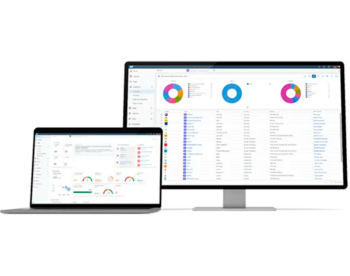Net Promoter Score
Net promoter score (NPS) surveys ask respondents to rate how likely they are to recommend something to a friend, on a scale of 1-10. Respondents who provide scores of 9 or 10 are considered ‘promoters’, 0-6 scorers are ‘detractors’, and 7-8 scorers are ‘passives’. The percentage of detractors is detracted from the percentage of promoters to reach a final score, with passives left out.
Net promoter scores can be a useful way to compare your performance against others in the same industry and to track success, as long as it’s measured consistently and correctly. Researchers can also ask respondents to rate many different dimensions, such as the different aspects of a job if they’re tracking the satisfaction of employees. Like all metrics, NPS has its limitations. For example, we might recommend an employer or product to some people, but not others. Being likely to recommend a product doesn’t mean we’ll get the opportunity to either.
Customer Effort Scores
Customer effort scores (CES) measure how easy it is for your stakeholders to complete a task. For example, apply for an insurance policy, complete an employee training module by asking for ratings on a scale of ’very easy’ to ’very difficult’.
CES is a simple model that can be applied to any process your customers, employees, or other stakeholders take. When used by itself it can be limiting of course. There’s no use in knowing that a form was difficult to complete if your respondents aren’t able to say why.
Customer Satisfaction
Customer Satisfaction (CSAT) asks respondents to rate their overall experience with the product, service, or various aspects, usually on a five-point scale. 1 is usually ‘very unsatisfied’ with 5 being ‘very satisfied’. The two highest values on feedback surveys are usually the most accurate, so CSAT only takes note of ratings of 4 and 5. The count of these high responses is divided by the total number of respondents and multiplied by 100 to reach a percentage score.
How to Calculate CSAT
(Number of satisfied customers (4 and 5)/ number of respondents) x 100 = satisfied Customers %
The benchmark for a good CSAT score is typically 75%, meaning three-quarters of respondents were satisfied. One of the limitations of CSAT is that responses are impacted by culture. Respondents from highly individualistic countries, such as the USA, are more likely to provide answers of 1 or 5. Japanese respondents, on the other hand, might provide either a 3 or 4, so it’s not always possible to combine data from multiple markets.
Satisfaction scores tend to also be heavily influenced by the last touchpoint a customer had with a company, or their feelings on the day. So, a one-off survey doesn’t always capture the long-term sentiment. And finally, ‘satisfying’ a customer is a shrinking indicator of brand loyalty. Many products satisfy, but in many markets, growth requires more than merely meeting a customer’s expectation.












